Our passion
The tradition for over 200 years
The flavor created
by traditional skills.
Owing its quality to local rice, pure water, a suitable climate, and masterly skill, we have been producing high quality sake since its founding for over 200 years.
Our high quality sake has a soft touch and distinct aroma.
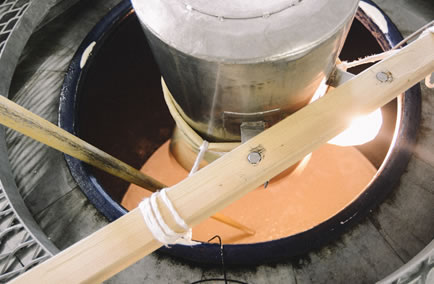

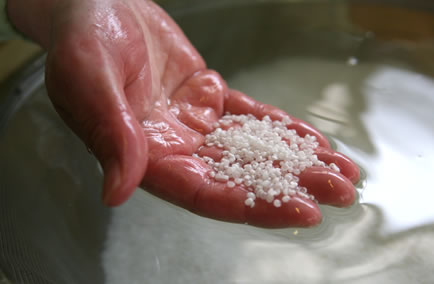
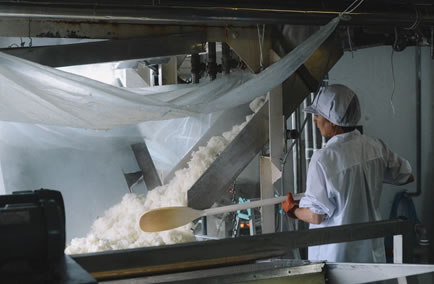
The flavor developed over the years
with high quality
local rice and pure water.
To produce our tasteful sake, we start by selecting ingredients such as rice and water.
We seek the very best flavor using the best ingredients,
the well-suited Niigata climate and fine skill.
-

Our rice
We mainly use Gohyakumangoku rice which grows best in the Hokuriku region including Niigata, and is especially suitable for sake with a crispy and dry touch. We have recently produced higher grade sake with freshly harvested Niigata sake rice, Koshitanrei.
-
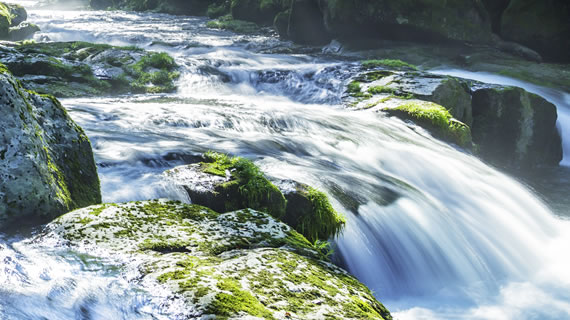
Our water
We use soft and pure water from the Kaji river which flows in Kita-echigo, the northern part of Echigo area. This soft water allows for slower brewing in order to produce our high-quality sake.
-
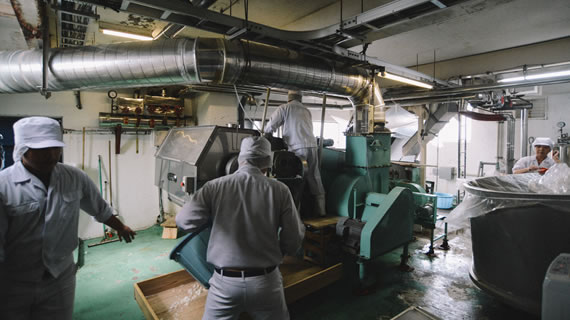
Our people
Skills are essential for producing good sake. Our Toji (master brewer) Takeshi Tanaka and all other workers who are involved with sake production have a first grade license for sake brewing.
They devote themselves to making the best possible sake. They are from the local Agakita district in Niigata. Our so-called “local sake” is produced by local people with locally grown rice. -
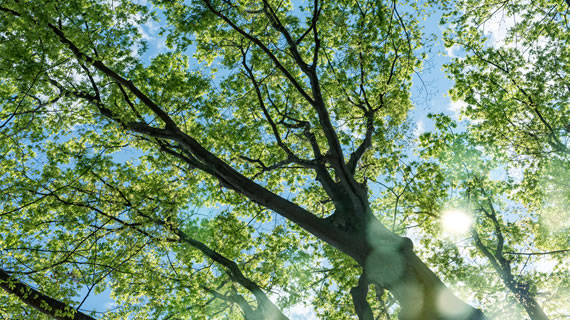
Our environment
The Echigo plain is one of the most well-known rice producing regions in Japan. Located in the northern part of the area, Aumont brewery produces sake with soft water taken from Kaji river which flows from the Iide mountain range.
Also, the clean, fresh air and low temperature with moderate snowfall in winter, are the most suitable natural conditions for sake production, which requires long-term fermentation at low temperature.
Process
-
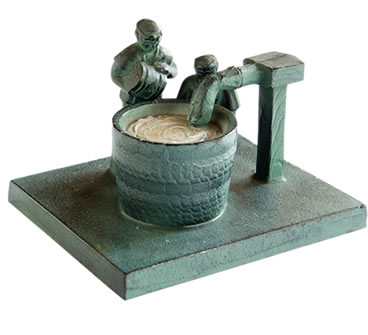
①Mizukumi: Water preparation
We use high quantities of water at different stages in the process of brewing sake. Sake in its final stage consists of approximately 80% water. In other words, the quality of water makes the quality of sake.
-

②Senmai: Rice washing
After being polished to the designated degree, the rice is washed to remove the rice bran and dirt. Without this process, sake will not taste as good.
-
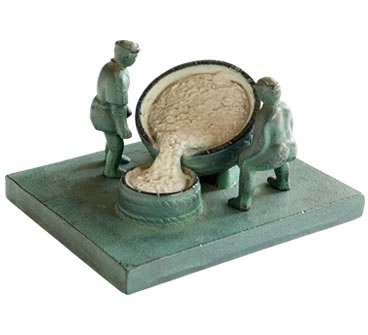
③Mizukiri: Removing
After being washed, the rice is soaked in water to absorb the appropriate amount of water. This process is called Shinseki. Mizukiri literally means ‘to remove surplus water’.
-

④Koshiki: Steaming
The rice is steamed in a large vat which is traditionally made of Japanese cedar wood or a modern steaming machine made of steel. This steaming process changes the quality of starch.
-
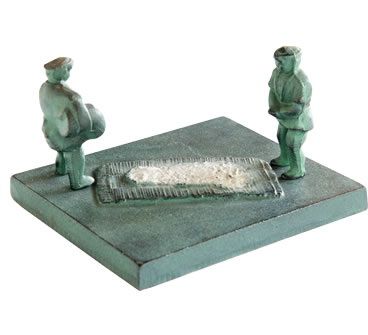
⑤Reikyaku: Cooling
Steamed rice is cooled to various temperatures for making rice koji, shubo (yeast starter) and moromi (sake mash). It is done naturally or by using a fan.
-

⑥Kojimuro: Making rice koji
This is the process of rice koji making. Koji molds are sprinkled onto the steamed rice to let them propagate. Rice Koji production is regarded as being vital to the sake brewing process as the flavor and quality of the end product depends on its success.
-
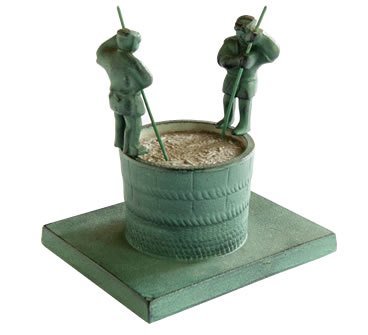
⑦Motozukuri: Making the yeast starter
Making mother sake, shubo. Shubo is the large amount of yeast which encourages alcoholic fermentation. Shubo is made by adding yeast, lactic acid bacteria and steamed rice into the mixture of rice koji and water.
-
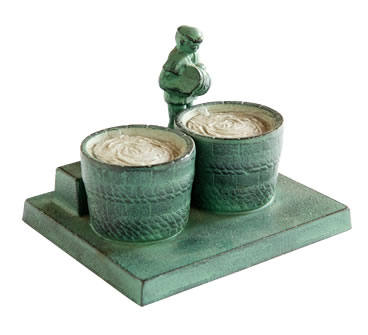
⑧Soejikomi: The first step of brewing
The sake brewing process is done step by step and the method called sandan jikomi (three-step brewing: rice koji, steamed rice and water are added three times) is generally used. Soejikomi is the first step to building the moromi mash.
-
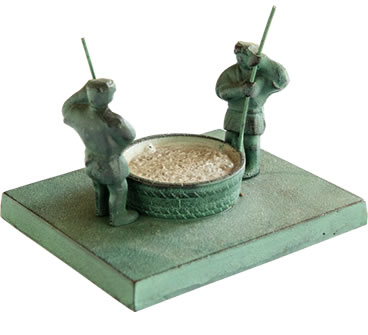
⑨Nakajikomi: The second step of brewing
This step is done after yeast is propagated in a vat and the fermentation process starts. Rice koji, water and steamed rice are added to moromi and brewed in a large fermentation tank.
-
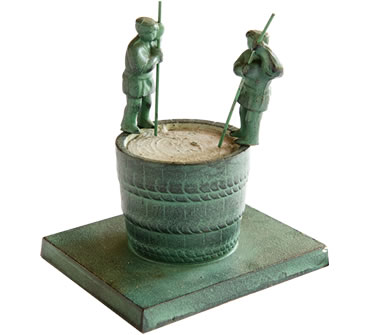
⑩Atodome jikomi: The third and final step of brewing
Rice koji, water and steamed rice are added to the tank, and it then moves to the final fermentation process. In 2 to 3 days it starts bubbling. From this stage, keeping the right temperature is crucial as it affects the flavor of the end product.
-

⑪Shibori: Pressing
When the alcoholic fermentation process is done, moromi is pressed to separate the liquid (sake) from the solid remains called sakekasu (sake lees). Depending on the brand and standards, the timing of pressing varies and it could change the flavor of the sake.
-

⑫Hiate: Pasteurization
After being pressed, sake is heated up to 60℃. Having completed this treatment, the sake itself is pasteurized which prevents it from going bad.

The process of making rice koji is
still very difficult.
Therefore,
we must
not be
complacent
about it.
I have kept in mind the principle of
producing sake with sweetness and softness.Message from Toji (master brewer):Takeshi Tanaka
As my grandparents’ home runs a sake shop and has business connections with Aumont brewery, I started working at the brewery in 1986 just after graduating from high school. In July 1986, I was dispatched to the Niigata sake School and learned the basics of producing sake. Since then, I’ve engaged in producing sake.
I became a Toji (current position) in 2003. I believe that the previous Toji, Mr. Soda, who worked as a Toji when I entered Aumont brewery, established the basics of our current sake. Since then, I have kept in mind the principle of producing sake with sweetness and softness. As our brewery gained attention for employing the first female sake brewer with a first grade license, this may have in turn affected the flavor of our sake for the better.
I realized the importance of making sake
in a natural environment and sticking to the basics.
In my third year as Toji, our sake was awarded a prize at the Annual Japan Sake Awards. In my fourth year, our sake was awarded a gold prize for five straight years in a row. I think this experience greatly influenced Aumont’s sake. Also, I came to know more experienced and senior Toji masters from other breweries who gave me useful advice. Now, I have more opportunities to visit other breweries where I can acquire new knowledge. This brought me back to the starting point of sake production, in that the making of koji is the most important stage of the sake process.
There is an expression we use for the essential process of sake production: first, Koji (yeast), second, Moto (yeast starter), third, tsukuri (production). I realized the importance of making sake in a natural environment and sticking to the basics.